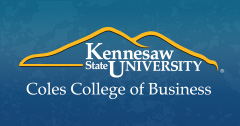Abstract
make the case for a strategic imperative (innovation) which demands that organizations simultaneously exploit current capabilities (“hold on”) and explore future possibilities (“let go”). We present a model for executive development that emphasizes the unique roles and contributions of traditional business education and executive education providers in developing the knowledge and skills necessary to pursue this ambidextrous adaptive strategy. Our model describes the unique perspective and limitations of both education providers and details how each contributes to building leadership capacities for exploitation and the necessary personal and organizational capabilities for exploration. The increasingly dynamic and competitive global environment (Barreto, 2010) has been described as the new reality for anyone engaged in business operations today. Given this new reality, some firms will choose to stick with their existing business, to “hold on” to what they do well by focusing on current products and the incremental improvement of internal efficiencies. Others will “let go” by exploring new opportunities and becoming more adaptive to changes in their competitive environment (Raisch & Birkinshaw, 2008). Managers facing the new reality of hypercompetition (D’Aveni, 1994; Wiggins & Ruefli, 2005) often frame the
choices available as an “either-or” proposition – either they can stick with the business as they know it or they can explore new alternatives and new business directions (Gupta, Smith & Shalley, 2006; Levinthal & March, 1993; March, 1991; Raisch & Birkinshaw, 2008; Wang & Li, 2008). This false dichotomy of choices, however, may needlessly limit competitive options and ultimately impact firm survival.
